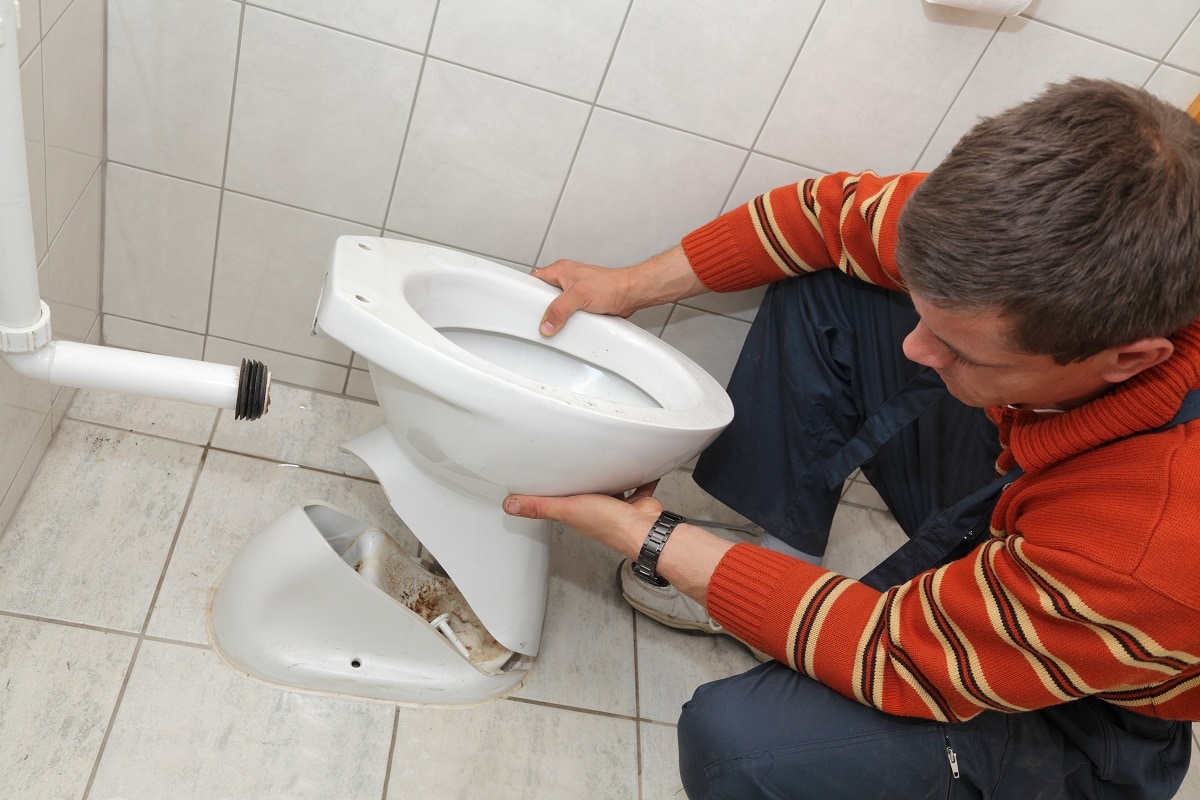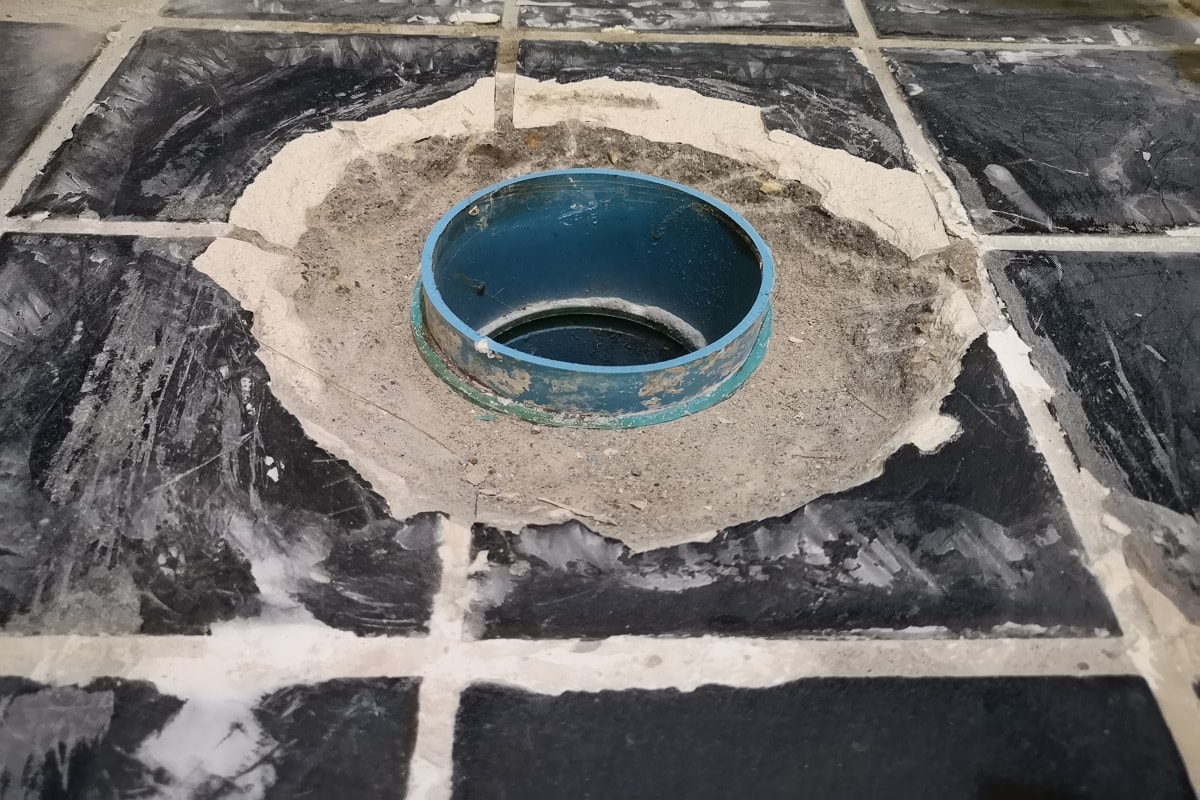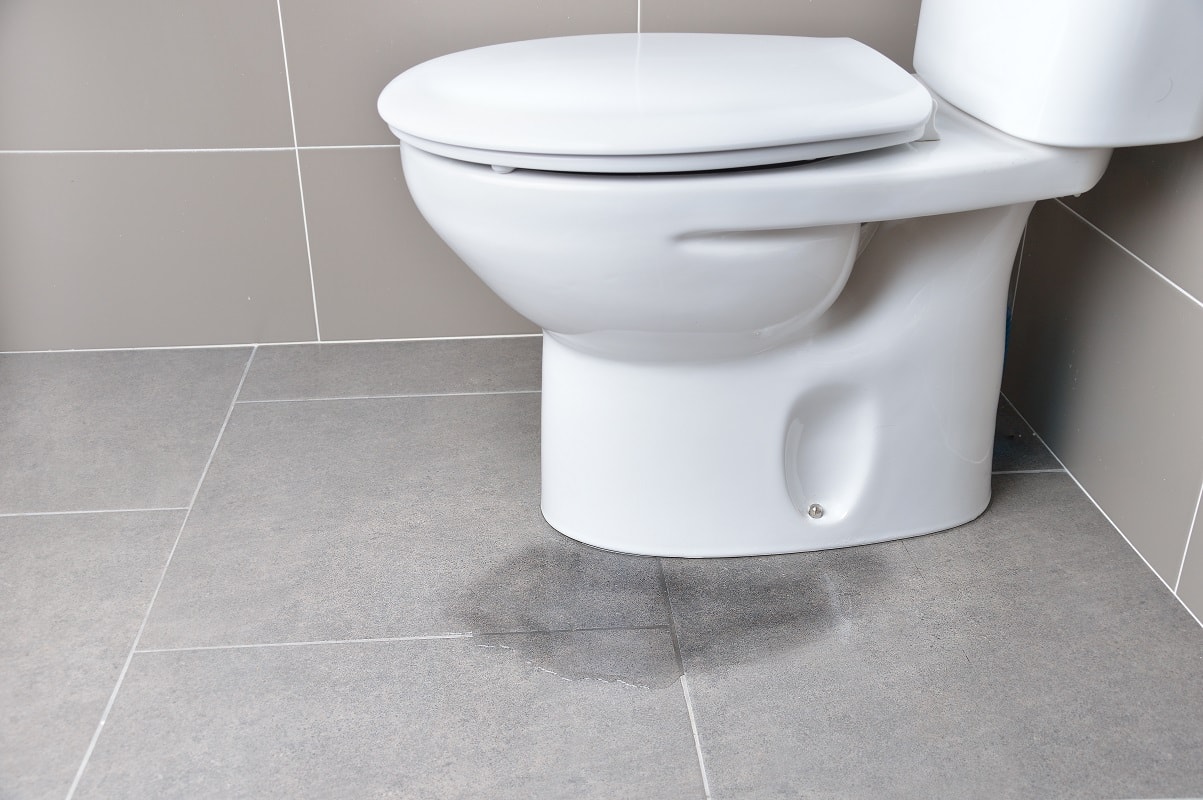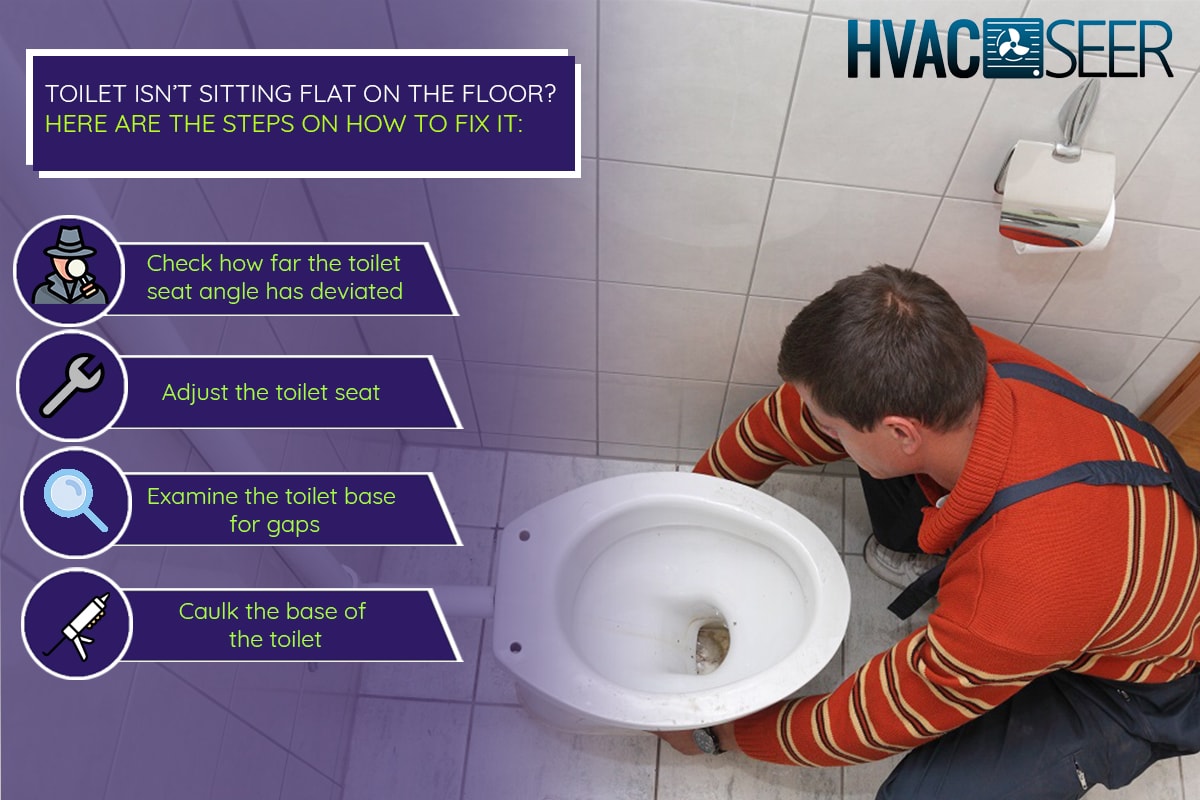Your toilet is sitting slightly off the floor, and you're unsure why it's doing that. You're probably wondering what you can do to fix the issue. We have researched this problem and all the information you need to solve it!
The best way to level a toilet is to adjust the angle of the toilet so that it sits perfectly flat. This is usually done by adjusting the bolts and nuts that secure the toilet seat and the flange.
You can also insert plastic toilet shims between the toilet base and use a bubble level to ensure the toilet is leveled properly.
There are many reasons why a toilet is no longer flat on the floor. One of the toilet flange nuts has loosened and come out, or a cupped surface area could cause it if the toilet is seated on a wooden floor. Keep reading as we'll show you how to fix this issue step-by-step!
What To Do When A Toilet Isn't Sitting Flat On The Floor?
If you have a rocking toilet or not sitting flat, something has gone wrong. The toilet seat is either not attached to the toilet base properly because the bolts are loose or because the wood flooring has cupped.
Here's what you can do:
1. Check how far the toilet seat angle has deviated
Using a bubble level, determine how far the toilet seat has tilted. If the toilet is not seated flat on the floor, it may be due to an uneven floor.
For example, the floor could have cracks or bumps that could cause the toilet to tilt.
You can have the floor fixed, but it's going to be a costly repair. However, if you think that the floor damage is just minor and you can live with it, you can proceed immediately to fix the toilet.
Check out this bubble level on Amazon.
2. Adjust the toilet seat

Uninstall the toilet seat and remove the wax coating that acts as a sealant between the flange and the toilet. Clean the flange surface and ensure it's free from the wax sealant.
A toilet gasket will replace the wax sealant.
Slide a couple of closet bolts into the flange keyway and secure the bolts with the washers. Once you have put the bolts and washers in place, it's time to put the toilet back together.
You will find two holes in the gasket for the mounting bolts to go through. Reinstall the toilet and fasten the nuts and bolts until they're snug but not too tight.
Now, place the bubble level on top of the tank and make adjustments until the bubble is in the center. You can then tighten the nuts and bolts to secure the gasket to the toilet once you've found the sweet spot.
Check out this toilet gasket on Amazon.
3. Examine the toilet base for gaps
Inspect the base area around the toilet for any gaps. If you find any, you may need to insert plastic shims to close the gap.
Toilet shims are designed to fit under a toilet to fill the gaps and hold the toilet in place. They work to reduce the rocking motion of the toilet while it is in use.
Check out these plastic toilet shims on Amazon.
4. Caulk the base of the toilet
![]()
Caulking is usually done by applying a small caulk around the bottom of the toilet's base to fill the gap between the base and the floor.
Caulking around the base of the toilet is vital to ensure that the toilet stays put. However, in this case, we are caulking the toilet base to hide unsightly shims.
Check out this caulking silicone caulk on Amazon.
The video below shows every step of the process:
When Is The Right Time To Replace A Toilet Flange?

A broken or cracked toilet flange is one of the most common plumbing issues homeowners face. But it can be easily repaired and replaced if you do it right.
First, determine whether you can repair the flange or you need to replace it. To do that, you'll need to remove the toilet seat and inspect the gravity of the situation. You'll see the flange after pulling the toilet seat out.
The flange installed on your toilet is bolted to the toilet floor. If your flange is cracked or broken, your toilet seat will wobble.
If you leave it like this for a long time because you seem to enjoy the rocking motion while doing your business, the nuts and bolts that hold the toilet in place will eventually loosen up.
The constant rocking motion and rubbing of the bolts against the threaded inserts will aggravate the issue, so you might be surprised one day that you will fall from the toilet seat at the slightest provocation.
How Much Does It Cost To Replace A Broken Toilet Flange?
Plumbing is tricky, and it is not easy to judge how much something costs. While a plumber might quote a flat rate, they may need to add on additional charges to cover unforeseen expenses.
If the job is simple, a plumber may charge $145 to $165 for a simple flange replacement.
On the other hand, if the work is more complex, the cost will rise. You may be quoted a higher rate if the plumber has found that your drain pipes are old and leaking and need replacing.
A plumber may also charge more if they need to come back out to finish the job. In addition, you might be charged a call-back fee if they find that they cannot fix the problem in one visit.
Can You Stack A New Flange Over The Old One?
Many people want to put in a new flange over their existing, old flange. They will use the old flange as a guide when installing the new one.
This is not always a good idea. The old flange will wear down over time and may not be in great shape. As a result, it could be cracked, broken, or uneven.
These flaws may render the new flange useless unless you fully caulked every flange's nook and cranny. But still, it's better if you throw away the old flange.
You don't need it. You will just be wasting unnecessary caulk to accommodate that old flange.
Best Caulking Sealant For Toilets
Caulk is an excellent product to use in bathrooms.
It is used for various purposes, including sealing joints, corners, and cracks. The best bathroom caulking material is easy to apply, dries quickly, and provides a long-lasting seal.
Silicone is commonly used in bathrooms because it can be applied easily and dries fast.
If you are unsure whether to use silicone or latex, you can opt to go with the one that is most familiar to you.
Can You Apply New Caulk Directly Over Old Caulk?
If you have old caulking on your toilet base and flange, you may be able to apply caulk directly over it. It all depends on the condition of the caulk and whether it is damaged.
You may also be able to caulk over it if it is in good shape.
It is common to caulk over caulk because it provides a stronger seal. However, you may consider caulk removal and reapplication if the old caulk has been damaged or contains mold or oil.
What Is The Largest Gap You Can Cover With Caulk?
The biggest gap you can fill with a single bead is one that is not larger than 1/4 inch. This may not seem like much, but you will be amazed at how much bigger a gap you can get if you go deep.
This is because the surface tension of the caulk makes it draw in tight to the surface, and it takes a lot of pressure to push it out.

How Long Does Caulk Last?
A silicone-based caulking compound will deteriorate at a rate that is slower than that of most organic compounds. However, a polyurethane-based caulking compound will degrade at a quicker rate.
Silicone caulk is expected to have over 20 years, while a polyurethane-based caulk may only last for a modest 5-10 years.
What Are Common Tools To Use When Removing Caulk?
There are various methods of removing caulk. Some people recommend scraping it off with a utility knife. However, many people don't like this method because it takes longer to remove.
You can also use a putty knife or needle-nosed pliers to remove the caulk. However, you need to be careful not to puncture the underlying surface.
In Closing
Toilets are supposed to be thrones where we can sit like royalty, not ducks. However, if your toilet seat is tilted, you may be forced to deal with an uncomfortable experience.
Luckily, you won't have to worry about experiencing this issue anymore since you've already known an easy fix that you can follow to correct the problem.
You might also like:
Toilet Pauses After Flush; Why And What To Do?





